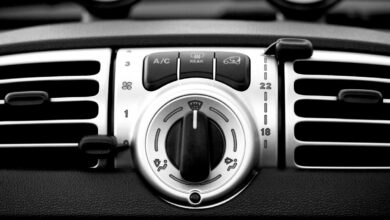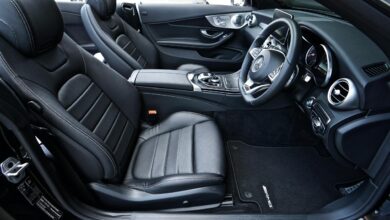Vehicle Care: Mastering Maintenance for Longevity and Value

The ownership of a personal vehicle—a complex, integrated machine vital for daily mobility and professional functionality—represents a continuous financial and mechanical commitment that extends far beyond the initial transaction. While the initial purchase price is the most visible cost, the long-term economic viability and operational reliability of the car are determined entirely by the owner’s commitment to rigorous, proactive mechanical upkeep.
Ignoring scheduled service is not a form of savings. It is a profound act of financial negligence that inevitably leads to rapid asset depreciation and catastrophic, high-cost failures later in the vehicle’s lifespan.
Maintenance and Repair is the indispensable, specialized discipline dedicated entirely to the systematic care, timely service, and precise mechanical restoration of the automobile. This crucial framework ensures that every component functions safely and efficiently.
Understanding the distinction between preventative and corrective action, the non-negotiable role of consistent diagnostics, and the strategic importance of meticulous record-keeping is absolutely paramount. This knowledge is the key to minimizing total cost of ownership, maximizing the vehicle’s functional longevity, and securing the highest possible resale value.
The Strategic Imperative of Preventative Care
The core rationale for prioritizing preventative maintenance is rooted in the non-negotiable principle of minimizing long-term cost and maximizing reliability. Every complex mechanical system, particularly the high-stress components of an engine and transmission, requires predictable fluid changes and part replacements. Neglecting these small, scheduled services allows minor wear-and-tear issues to escalate into severe, systemic failures. This escalation often results in repair bills that are exponentially higher than the cost of the initial preventative service.
Preventative maintenance is a strategic investment. It ensures the vehicle operates at peak efficiency. This optimized performance directly translates into better fuel economy and reduced operational costs over the long run. Consistent maintenance also preserves the vehicle’s mechanical integrity. This integrity is essential for achieving the highest possible trade-in or resale value.
The entire discipline is focused on predictability. By adhering to the manufacturer’s maintenance schedule, the owner transforms potential, sudden, high-cost breakdowns into manageable, budgeted, scheduled expenses. This control minimizes financial surprises and enhances personal stability.
Conversely, a failure in preventative care compromises safety. Worn tires, degraded brakes, or malfunctioning suspension components severely increase the risk of a catastrophic accident. Mechanical integrity is a non-negotiable requirement for road safety.
Essential Preventative Maintenance Schedules

Preventative maintenance follows a predictable, systematic schedule determined by the vehicle’s manufacturer. Adherence to these time and mileage intervals is mandatory for preserving the vehicle’s operational warranty and securing long-term reliability. Neglecting the basics erodes system health.
A. Fluid Replacement (The Lifeblood)
Fluid replacement is the single most critical preventative measure. Engine oil, the lifeblood of the motor, must be changed at prescribed intervals. Oil degrades over time. It loses its lubricating properties. Failure to change the oil causes excessive friction, massive heat buildup, and inevitable engine failure. Other vital fluids include brake fluid, transmission fluid, and coolant. These fluids require periodic flushing and replacement to maintain system integrity.
B. Tire Care and Rotation
Tire care is essential for safety, fuel efficiency, and handling. Tires must be regularly inspected for proper inflation pressure. Low pressure degrades handling. It accelerates wear. Tire rotation (switching tire positions) at recommended intervals ensures even tread wear across all four tires. Regular rotation extends the overall lifespan of the tire set. Worn tires significantly compromise braking distance and road grip, especially in adverse weather.
C. Brake System Inspection
The Brake System is the most critical safety system of the vehicle. It requires continuous vigilance. Brake pads, rotors, and the hydraulic fluid must be inspected regularly for wear. Allowing brake pads to wear down completely causes catastrophic damage to the rotors. It creates a complete loss of braking efficiency. Proactive replacement of pads saves the more expensive rotors.
D. Filter Replacement
Filter replacement is crucial for component longevity. The air filter cleans air entering the engine. A clogged air filter reduces airflow. This degrades fuel efficiency and engine power. The cabin air filter cleans air entering the passenger compartment. It must be changed periodically to maintain superior interior air quality. The oil filter is replaced with every oil change.
Diagnostics and Modern Repair

The complexity of modern vehicle systems necessitates the use of advanced digital tools and sophisticated diagnostic procedures for effective repair and service. The engine and control systems are managed entirely by integrated software. Diagnostics are mandatory for accurate repair.
E. On-Board Diagnostics (OBD-II)
Modern vehicles are equipped with On-Board Diagnostics (OBD-II) systems. These computer systems continuously monitor the engine’s performance, emissions, and key mechanical functions. When a fault is detected, the system illuminates the “Check Engine” light. It stores a specific diagnostic trouble code (DTC) in the vehicle’s computer. The DTC code provides the mechanic with the necessary initial guidance for troubleshooting the problem.
F. Diagnostic Trouble Codes (DTCs)
Diagnostic Trouble Codes (DTCs) are standardized codes that correspond to specific sensor readings or system faults. Mechanics utilize specialized diagnostic tools to read and interpret these codes. The code itself does not identify the failed component directly. It points to the faulty system or sensor. Accurate diagnosis requires the mechanic to interpret the code contextually. Relying only on a code reading can lead to unnecessary, costly component replacement.
G. Predictive Maintenance
Advanced service centers are moving toward predictive maintenance. Telematics and sensor data are continuously monitored by sophisticated algorithms. These algorithms predict when a component is likely to fail before the failure actually occurs. This allows service to be scheduled proactively. This minimizes unscheduled, costly roadside breakdowns. Predictive maintenance maximizes vehicle uptime.
H. Electronic and Software Updates
The software-defined nature of modern vehicles means that many performance issues or minor faults can be resolved through electronic and software updates (Over-the-Air or OTA). These updates refine engine control units (ECUs), optimize transmission function, and enhance safety systems. Timely software updates are a non-negotiable part of modern maintenance.
Cost Management and Record-Keeping
Effective cost management requires strategic decision-making regarding repairs. It also demands meticulous record-keeping to preserve the asset’s financial value. Every repair decision must be weighed against the vehicle’s current market value and remaining lifespan. Maintenance records are vital.
I. Maintenance Documentation
Meticulous documentation of all service, fluid changes, and repairs is absolutely mandatory. This record proves the vehicle’s mechanical integrity and responsible ownership. A complete service history significantly enhances the vehicle’s resale value. Buyers are willing to pay a premium for a car with transparent, complete maintenance records.
J. Independent vs. Dealer Service
The owner must choose between independent mechanics and authorized dealer service centers. Dealer service offers manufacturer-certified parts and specialized, up-to-date diagnostic tools. It is often more expensive. Independent mechanics often offer lower labor rates. They can be equally competent. The choice is a balance between cost and guaranteed certification.
K. The 50% Rule for Repair
A financial guideline often used for older vehicles is the $50\%$ Rule. If the estimated cost of a major repair exceeds $50\%$ of the vehicle’s current market value, the owner should seriously consider selling the car. They should replace it with a newer, more reliable model. This rule prevents financially unsound investment in a rapidly depreciating asset.
L. Avoiding Unnecessary Service
A vigilant owner must avoid authorizing unnecessary service recommendations often pushed by repair shops or dealerships. Understanding the scheduled maintenance intervals is critical. The owner should request specific explanations for every recommended repair. Seeking a second opinion for major, unexpected repairs is always financially prudent.
Conclusion
Vehicle Care and Maintenance is the indispensable discipline for securing asset reliability and value.
The primary objective of preventative maintenance is minimizing long-term financial cost by preempting small issues from escalating into catastrophic failures.
Non-negotiable preventative actions include scheduled fluid replacement, rigorous brake system inspection, and mandatory tire rotation.
Fluid replacement, particularly engine oil, is the single most critical preventative measure that protects the expensive, complex internal engine components.
Brake system integrity and tire inflation pressure are fundamental maintenance checks that are absolutely mandatory for guaranteeing road safety.
Modern diagnostics rely on the On-Board Diagnostics (OBD-II) system to store codes that guide specialized mechanics toward accurate repair identification.
Meticulous documentation of all service history and repairs significantly enhances the vehicle’s resale value and instills necessary buyer confidence.
The owner must balance the high cost of certified dealer service against the often lower labor rates provided by reputable independent mechanics.
The 50% Rule acts as a crucial financial guideline, advising replacement of older assets when major repair costs exceed half of the vehicle’s total market value.
Predictive maintenance, enabled by telematics and sensor data, proactively minimizes unscheduled breakdowns and maximizes the vehicle’s operational uptime.
Mastering this systematic discipline is the final, authoritative guarantor of the asset’s functional longevity and minimum total cost of ownership.
The strategic commitment to maintenance transforms the vehicle from a potential liability into a reliable, efficient, and well-managed mode of transport.


